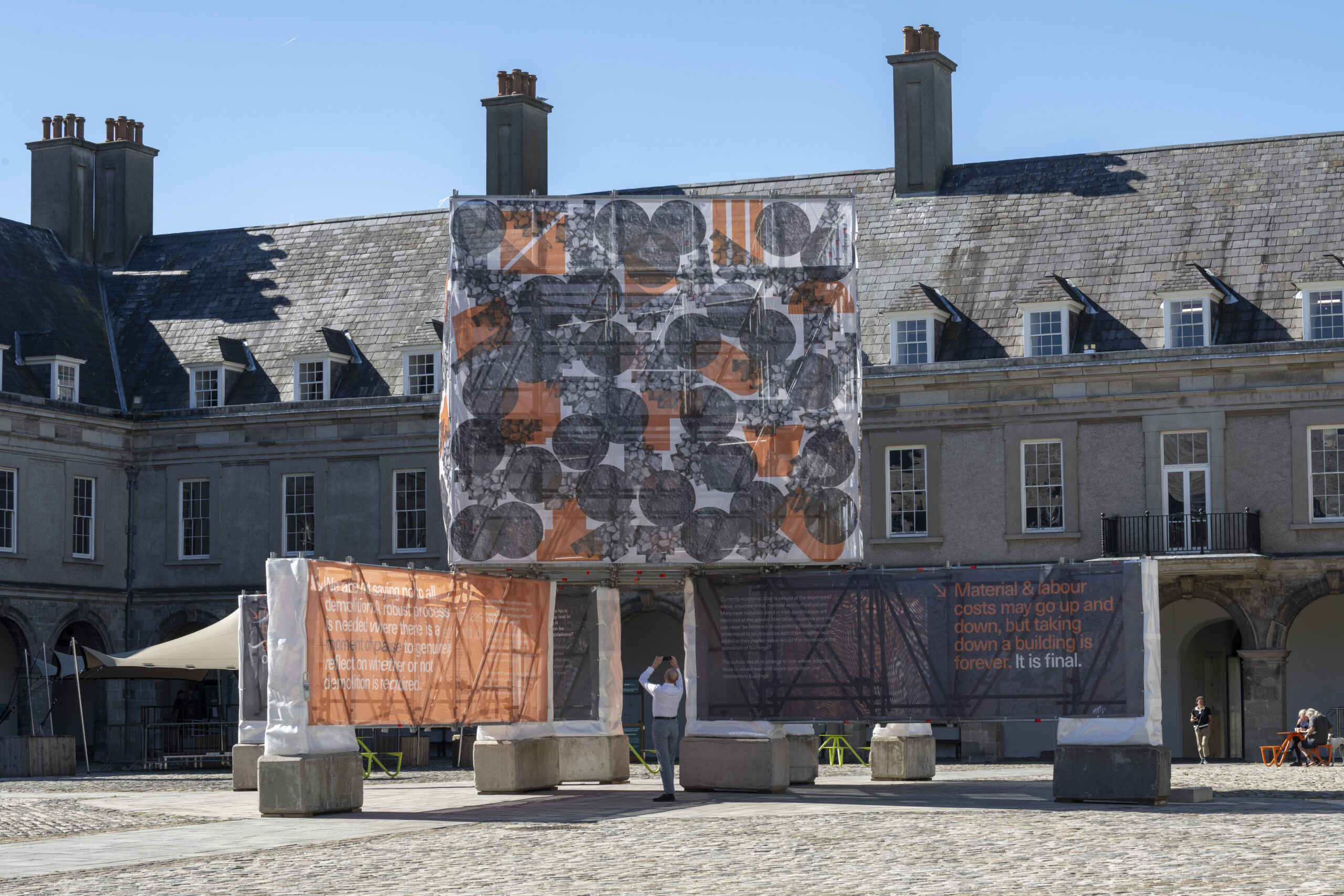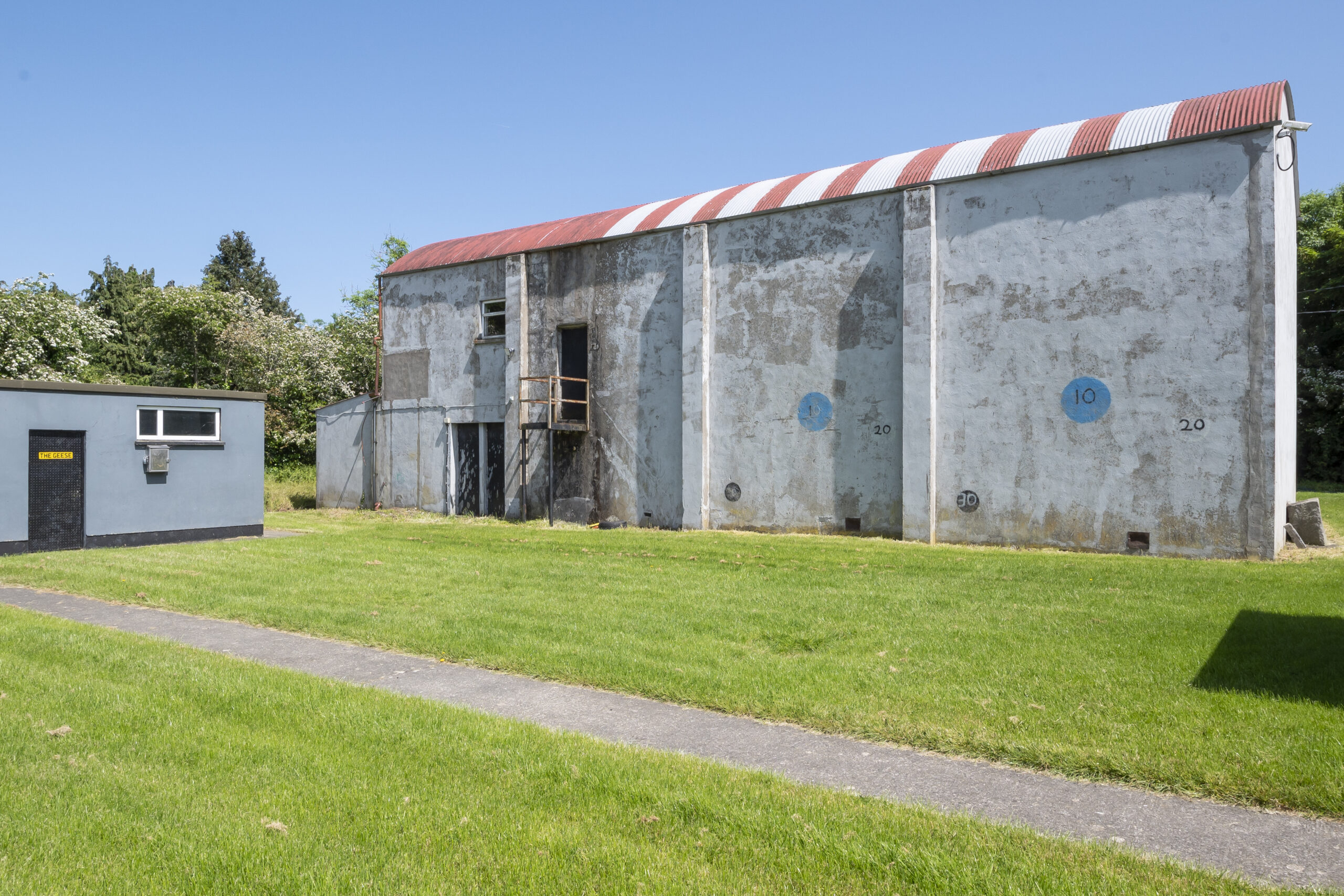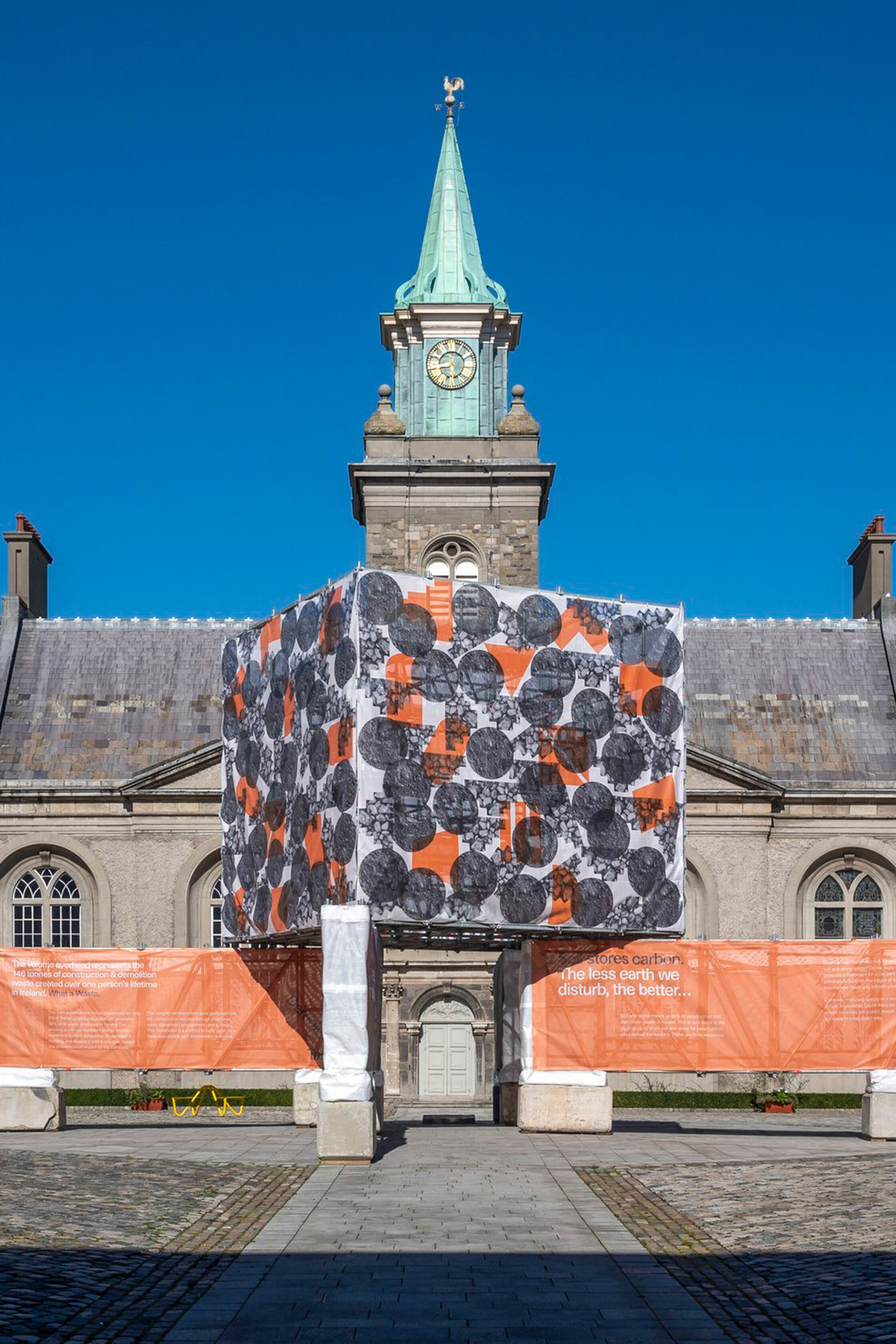





Demolition Take Down (DTD) is an initiative established by Islander Architects in Ireland. Through their previous experience of participatory design work, these architects learnt first-hand about the difficulties of vacancy and dereliction faced by communities in towns and villages across the island. Both the architects and these various local communities felt frustration at the limited actions available to tackle these problems from the bottom up. The reliance on top-down decision-making, together with all of the commerce associated with the built environment, led the architects to establish DTD as a multi-disciplinary initiative to enable a better, more holistic understanding of the factors surrounding this stasis.
The idea of community-led renovation as a crossover between public engagement and adaptive reuse became the primary goal for Islander. A secondary objective was to gain a more informed view of the traditional reliance on demolition as the main instrument of community regeneration projects throughout the island of Ireland, particularly in the capital city of Dublin. Through surveying the construction industry and conducting in-depth interviews with a range of professionals including engineers, planners, politicians and policy makers, they could see the challenges ahead more clearly. The aim of this industry engagement was to gather a multi-faceted perspective on the types of decision-making affecting existing buildings and an appreciation of the value assigned to them by various actors.
DTD began in the winter of 2023 and was organised in three phases. Phase one focused on gathering information on the topic of demolition. Phase two challenged the siloed learning experienced within the third-level education of construction industry professionals. This resulted in the first collaboration between architecture students and property economic students organised with DTD and their respective schools in TU Dublin (Image 03). Phase three brought all of the learnings from the previous phases together as a public exhibition in the historic grounds of the Royal Hospital in Kilmainham, itself adaptively reused to become the home of the Irish Museum of Modern Art (IMMA). This exhibition took the shape of an interactive installation freely accessible to the public for the month of September 2024 (Image 01, 02).
In the earlier phases, the strategy of “sitting on the fence” made DTD more accessible to the wider construction industry. Going beyond the architectural community and straying into the technical, financial, social, and policy aspects of the industry lent some necessary weight to a relatively young initiative. However, the time to take a stand emerged tentatively with the exhibition and supporting events of the third phase.
The exhibition in IMMA was important for several reasons: it communicated the scale of the construction and demolition waste produced by an average Irish citizen in their lifetime; it challenged the notion that public sentiment represents the life and death of many older buildings, particularly in Dublin; and finally, it gave DTD a platform to legitimise itself as a going concern.
For DTD there is now an ambition to tackle demolition waste through the type of participatory design that Islander Architects have showcased previously within a wider network of design professionals working towards a viable community-led adaptive reuse sector in Ireland. One of the key challenges facing this next phase of the project is the notion of progress, and what that means to many who have grown up in a relatively young country like Ireland. The innate need to demolish is closely linked to an appreciation that new is always best. While this experience is not unique to Ireland, it is nonetheless a popular sentiment here, and therefore one that requires further work to bring people along on the renovation journey.
Labour represents another challenge, alongside the lack of knowledge about these older buildings. Currently there are conservation grades for architects and a limited offering for engineers but these do not prioritise more recent building stock from the 1960s, 70s or 80s. As a result, knowledge and appreciation amongst professionals of the technical or social features of these buildings is limited, which in turn affects the potential viability of adaptive reuse. Put simply, if a client can’t easily put together a design team with the necessary knowledge, passion and conviction to alter an existing building economically, they are not going to be persuaded to turn off the engine of the excavator.
The labour of construction itself is another area of caution, with the Irish government, among others, promoting off-site construction through prefabrication. DTD would argue that the efficient environment of a factory is not always compatible with many renovation projects, and that the de-skilling of construction labour will impact on the ability of contractors to renovate a wider range of older buildings. However if we reconsider the construction site itself as a factory environment, as one demolition contractor suggested to DTD, then renovation has the potential to be re-cast as the basis for more jobs, a simple by-product of the fact that renovations are often considered more labour-intensive.
The argument that there is little incentive to renovate in Ireland is a boom and bust attitude that, while rewarding for some, is disenchanting for many others. Property economics is a complex aspect of the modern built environment, but one idea that continues to motivate DTD is the low-risk potential offered by renovation to building owners. It is worth remembering that the time it takes to demolish an existing building safely, clear the site responsibly, and build a new energy-efficient, low-carbon replacement exposes building owners or developers to an extended period of market volatility. A renovation, while labour-intensive, has the potential to get this asset back onto the market more quickly. Perhaps the return on investment might be lower and the renovation could perform less efficiently in terms of operational costs but, crucially, it is a return on investment in a timely manner. Factoring in the balance between operational and embodied carbon, as well as the length of time it takes for new, better-performing buildings to provide a full return on investment, renovation often proves to be the most interesting option both economically and ecologically.
DTD is now recalibrating itself to evolve this research into a scenario where all of these challenges are united under the banner of community-led renovation (Image 04). This could be in partnership with traditional top-down decision makers, like local government, and presented to local communities as an attractive proposition. The idea of organising a group of individuals into a legal entity as a means to purchase or adopt buildings for renovation, with the value gained from this act passed on to subsequent generations in perpetuity, is a possible direction that has helped DTD refocus its ambitions. Combined with a renewed promotion of self-help as a social movement, whereby a group of people work together towards a common goal of social and economic empowerment and cultural and institutional change, this approach has the potential to subvert the rising costs of constructing in Ireland. In order to support this change, DTD and others need to re-learn how to become effective enablers and acquire the necessary skills for community-led renovation.
Demolition Take Down is a research and engagement initiative led by two Irish architects, Ciarán Molumby and Laura Carroll. The initiative is aimed at revolutionising Ireland’s demolition practices. The construction industry in the Republic of Ireland accounts for 6% of the employed population but generates 48% of all waste produced nationally. Demolition Take Down aims to create an attitudinal and behavioural shift by engaging across disciplines, gathering insights from the industry and highlighting possible ways forward. To date the project has included a large-scale public installation at The Irish Museum of Modern Art and a series of talks, film screenings, engagement surveys and student workshops across 2023-2024.
Demolition Take Down is the Irish organising member of HouseEurope! and supporter of its European Citizens Initiative; Yes to Renovation, No to Demolition. This is an ambitious example of community-led engagement that could lead to a bottom-up approach to governance at the European Parliament once it secures 1 million votes across all member states. Let us all remember the social, cultural and environmental value of our existing buildings before removing them forever in the interest of financial value alone. It’s time for members of the European Parliament to join this conversation too!
